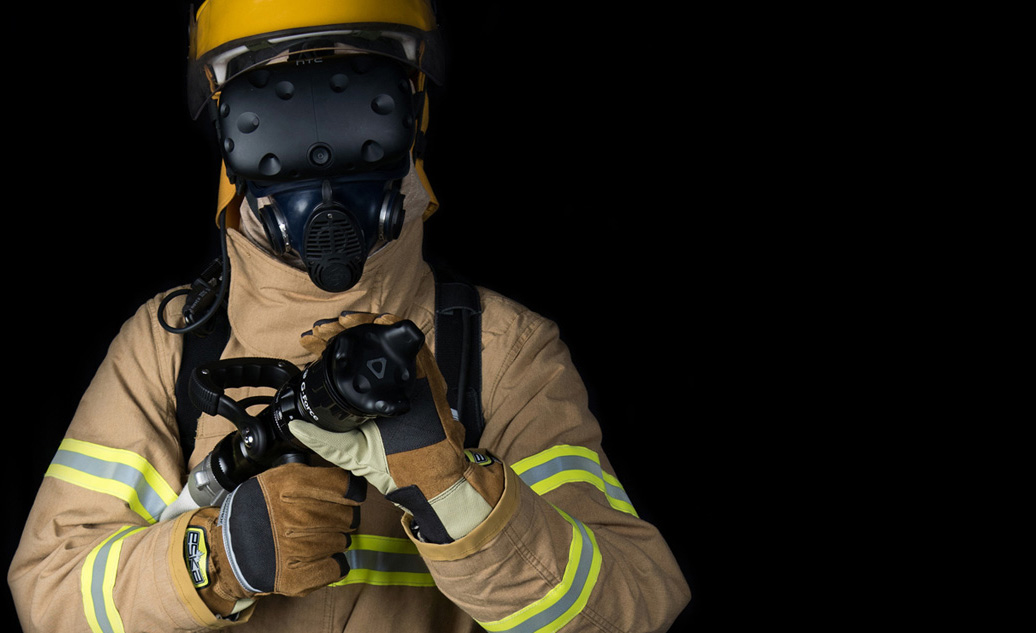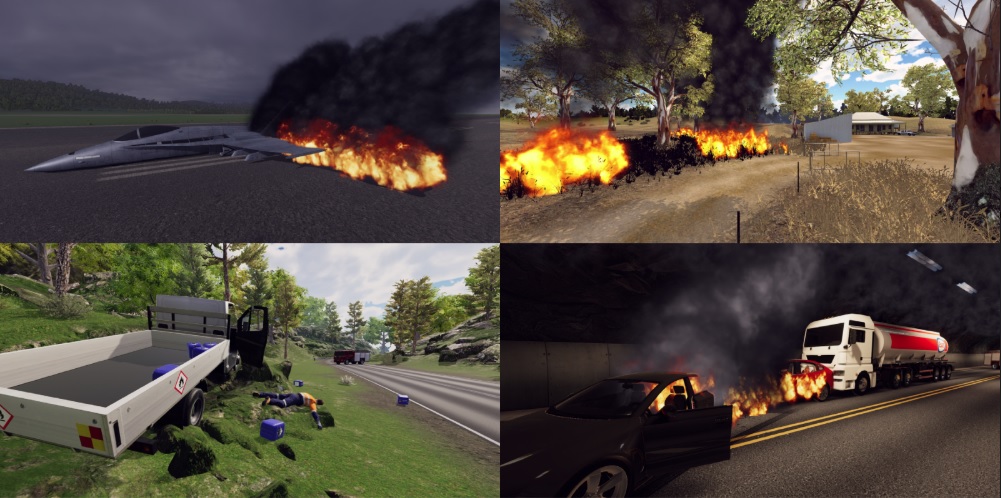
July 24, 2020 – The US Fire Administration (USFA), an entity of the US Department of Homeland Security’s Federal Emergency Management Agency (FEMA), has recently published an article advocating for the use of virtual reality (VR) technology in order to help save the lives of firefighters in training. According to the USFA, from 2008-2019, 110 firefighters lost their lives due to training injuries.
The organization commented: “While many of these may be attributed to personal health issues, the majority comprise a senseless loss of life. If you are a training officer looking for a practical, safe alternative to dangerous live fire scenarios, take a look at virtual reality training.”
According to the USFA, from 2008-2019, 110 firefighters lost their lives due to training injuries.
VR technology is helping to raise the bar in firefighter training, while also providing the added benefit of helping to save lives and conserve valuable resources. The use of VR technology allows firefighters to train for incidents that cannot easily be replicated or may be very costly to recreate, and helps to eliminate the hazards involved in ‘live training.’
VR makes for an ideal solution for this sort of training, as the technology can be used for both individual and group learning using 360° media (2D and 3D), as well as for creating realistic immersive environments and experiences for those participating, all whilst maintaining a very acceptable level of safety. The tech can also be used for virtual meeting spaces and Q&A sessions, adding a further layer of interactivity to more classroom-style learning experiences.
The USFA states that the leading cause of firefighter death during training is stress/overexertion (70%). The remainder of deaths are attributed to falls, vehicle collision, self-contained breathing apparatus (SCBA) failure or environmental exposure.
Some of the benefits of using VR listed by the USFA include:
- Safe training environment with 360-degree views;
- Less wear and tear on personal protective equipment (PPE) and response equipment;
- First-line equipment remains available in its response area;
- Allows for the creation of 3D virtual reality spaces from photographs and videos of actual buildings in the response area;
- Repeat after-action response scenarios;
- Training anytime/anywhere;
- Improved safety inspections and 3D visualizations of buildings within first-due areas. This gives the ability for walkthroughs and “what if” scenario development;
- VR technology helps to keep those in training immersed and present in the moment, thus “tapping into a truly experiential moment.”
The organization has gone on to encourage the adoption of VR by fire departments, and offers decision makers resources to assist with the decision making process for choosing VR hardware and software setups.
The USFA added: “‘Off the shelf’ VR equipment and apps can be adopted for use in the fire service with a low entry cost. At a higher price point, ‘Enterprise’ business VR solutions and custom software for emergency services are available that will provide a robust VR system.” However, it added that the quality of a VR setup is absolutely critical to ensuring a reliable and immersive training experience.

Virtual environments are not without risk of course, although, going through a training drill of a burning building or vehicle wreckage in a virtual environment for example, is much safer than practising with the real thing. However, the USFA encourages fire departments to create VR-specific policy and training materials to outline responsibilities and review safe operation prior to use.
Recently, some companies have started to specialize in the provision of VR training solutions targeted specifically at fire departments and firefighter training. One such company is Australia-based FLAIM Systems, which provides its ‘FLAIM Trainer’ offering, a platform designed to place firefighters in realistic training scenarios by utilising several customised elements, including:
- A head-mounted display that incorporates a HTC Vive VR headset with breathing apparatus;
- An industry-standard-hose-line system with a jet reaction force component, and encapsulating hose and branch/nozzle that features a customized Vive controller on the end;
- Industry-standard-protective clothing with heat generation elements.
Commenting on the use of virtual reality for firefighter training, FLAIM Systems’ Chief Technology Officer, James Mullins, stated: “FLAIM is at the forefront of the emerging immersive training market, we have seen strong uptake of our FLAIM Trainer system in fire services around the world since it was launched in 2018.”
FLAIM’s solution offers advanced levels of immersion. Describing just what the solution can do, Mullins said: “We can control every aspect of the simulation, with the system applying immersive technologies developed from over 10 years and more than 10,000 hours of research. We put people into a suit that can reach nearly 200°F. If you walk up to a fire, you’ll feel the heat. We have a jet reaction force on the hose that can pull a couple of people off their feet if they’re not holding it properly. Flow rates, water used, where a person moves—we can capture that with Vive Trackers.”
FLAIM has now sold over 50 systems and has clients in 18 countries. For more information on FLAIM Systems, please visit the company’s website.
Image / video credit: FLAIM Systems / YouTube
About the author
Sam is the Founder and Managing Editor of Auganix. With a background in research and report writing, he has been covering XR industry news for the past seven years.
